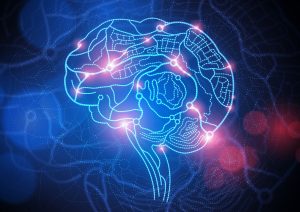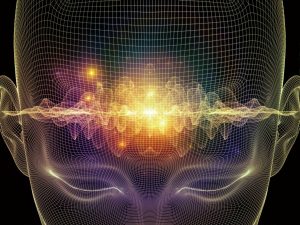ADD/ADHD Treatment without Drugs
Conveniently located to serve the areas of Santa Monica, Venice, South Bay, Brentwood, Beverly Hills, Pasadena and all of Greater Los Angeles

Although medication is the most common treatment for ADD/ADHD, many individuals and their families are looking for healthier, non-pharmacological alternatives to treat their ADD/ADHD and its associated behaviors. A survey conducted by consumer reports found that parents reported a high frequency of negative side effects in children who were taking medication for their ADD/ADHD . As many as 84 percent of children who tried some form of stimulant experienced detrimental and disruptive side effects.
The most common side effects of these drugs range from loss of appetite and weight loss to sleep problems, irritability, upset stomach, and moodiness. Other symptoms which are much less prevalent but present a much more serious health risk are tics, heart palpitations, manic behaviors, and hallucinations.
Neurofeedback is a well-established and proven treatment approach for alleviating ADD/ ADHD and its comorbid behaviors. Thanks to advancements in the technology being used for the QEEG/ Brain Mapping and neurofeedback, it has become one of the most effective non-pharmacological treatments to reduce and eliminate the signs and symptoms of ADD/ADHD and its associated behaviors, in both children and adults.
Contents
- 1 Neurofeedback As a Healthy, Effective Alternative
- 2 TREATMENT FOR ATTENTION DEFICIT DISORDER
- 3 COMPREHENSIVE TESTING FOR ATTENTION DEFICIT DISORDER (ADD/ADHD)
- 4 WHAT IS A QEEG/ BRAIN MAP?
- 5 WHO CAN HAVE A BRAIN MAP?
- 6 What is Attention Deficit Disorder (ADD/ADHD)?
- 7 WHAT ARE THE DIFFERENT TYPES OF ADHD?
- 8 COMMON SIGNS AND SYMPTOMS
- 9 RISK FACTORS
- 10 CO-MORBIDITIES
- 11 Consultation
Neurofeedback As a Healthy, Effective Alternative
In addition to strong therapeutic outcomes, neurofeedback is a non-drug based intervention and does not cause negative side effects or health risks the way drug-based interventions do.

The Qeeg/Brain Map and subsequent Neurofeedback treatment can also identify and target common co-morbidities that occur in children and adults with ADD/ADHD. Combining neurofeedback treatment with other cognitive-behavioral based interventions to address attention as well as any anxiety, memory , executive dysfunction, learning , and behavior issues results in successful treatment outcomes that have long-term lasting effects.
Studies have shown that patients who were assessed up to 10 years after completing their neurofeedback treatment did not have a recurrence of symptoms related to ADD/ADHD. They continued to maintain the positive behavioral changes that they received from the treatment. With drug-based treatments, the benefits only last as long as the drug is being used. Once the effects of the drug wear off and the drug is no longer being used, the symptoms and behaviors associated with the ADD/ADHD return.
TREATMENT FOR ATTENTION DEFICIT DISORDER
Neurozone’s Integrated Brain Systems Evaluation is a comprehensive assessment of our clients’ various neurodevelopmental and general cognitive and behavioral areas of function.
Every brain is a complex puzzle of integrated systems which together make up an individual’s personality traits, behaviors, learning styles, cognitive strengths and weaknesses, and emotional response patterns. In order to determine the source of impairments in any of these areas, it is necessary to sort out the factors that may be influencing how the brain is working.
There are several treatment approaches for children and adults with ATTENTION DEFICIT DISORDERS. Professionals who treat ADD/ADHD will either use a single approach as intervention or they will use a combination of approaches. It is most common to find a combination approach as it has been shown to be the most successful way to treat ADD/ADHD.

Some treatment approaches involve behavioral techniques and others involve non-therapeutic techniques such as vitamin supplementation. The most common treatment for ADD/ADHD in the United States is the use of a stimulant and other medications (ie. approximately 2:3 individuals).
The treatment approach that will be prescribed will depend upon on a number of factors including age of the individual, comorbidities, individual and family belief systems, and severity of the attention problems.
COMPREHENSIVE TESTING FOR ATTENTION DEFICIT DISORDER (ADD/ADHD)

At the center of our ADD/ADHD evaluation is the QEEG/Brain Map. Every client who comes to Neurozone for an integrated brain systems evaluation receives a brain map regardless of the condition being treated or the age of the client. At Neurozone, a combination of various diagnostic tests are used in conjunction with other sources of information, including clients’ detailed medical history, parent and/or teacher ratings, clinical interviews, performance test results, and when possible, direct observation in multiple settings including the classroom.
Testing for attention challenges usually starts at around age 6 or 7. This testing is designed to help identify children, adolescents, and adults who are struggling with the various elements of attention such as focus, distractibility, impulsivity, and zoning out or spacing out. Current assessment methods for attention require a combination of measures.
These measures include psychometric/standardized testing, clinical interviews, observations in various settings, and questionnaires. Continuous performance tests, such as the Integrated Visual and Auditory continuous performance test (IVA), are essential tools used for identifying and describing attention deficits. These measures examine the different parameters of attention deficit disorders and their most common co-morbid problems. When used in conjunction with other assessment methods, these tests can assist the clinician in making a determination about the presence and severity of an attention deficit disorder.
The comprehensive evaluation provides assessments in some or all of the following areas, depending on the patient’s age, symptoms, and behaviors:
- Intelligence
- Executive functioning
- Processing
- Attention
- Memory
- Visual-spatial functioning
- Communication/language skills
- Emotion and mood
- Personality
- Sensory integration/processing
- Motor skills
- Academics
WHAT IS A QEEG/ BRAIN MAP?
A Quantitative EEG (qEEG), also known as a Brain Map, is a computer analysis of the EEG signal from the brain using 19 or more channels of simultaneous EEG recording. Raw EEG data is first recorded, then analyzed and compared against a reference database of “normal” subjects. This type of evaluation is used as an extension of the EEG interpretation, to provide further analyses of brain function for clinical purposes to treat a variety of conditions. The rhythmic cycles observed in the EEG recording represent the brain activity between the cortex and the thalamus.

The 19 channels are represented by 19 electrodes located inside a cap which is placed on the head, against the scalp, to evaluate brainwave function. This placement is called the 10-20 International System of Electrode Placement. The cap, with its 19 channels, produces an analysis of the brainwaves in terms of numbers that represent elements of the brainwave such as frequency, voltage/amplitude or power, location of a phenomena, waveform shape, waveform occurrence, regulation of voltage and frequency, and reactivity.
When we combine the QEEG/Brain Map with our other evaluation measures, we are able to determine, with relative accuracy, the underlying neurological causes of the attention deficit behaviors as well as the co-morbidities. This will guide the type and location of the neurofeedback treatment protocol which will specifically target those areas of the brain.
WHO CAN HAVE A BRAIN MAP?
The procedure is appropriate for children as young as 2 years of age and adults of all ages.
It usually takes between 30 and 45 minutes and consists of placing a cap, similar to a snug swimming cap, which contains small electrodes on the head. These electrodes measure the electrical activity coming from the brain. This procedure is done while the client is sitting in a chair with his or her eyes open and then closed, or while the client is performing a task like reading. The client is given directions to remain calm and in a resting state throughout the assessment process.
The results of the qEEG analysis are displayed in the form of statistical tables and topographic maps.
Topographic maps provide a convenient schematic representation of the relationships among the EEG waveforms, map displays, and the results of the statistical analyses. The data collected from the qEEG are statistically compared to a large normative database which provides information about how the brain waves should look and operate at different ages. Once compared to this database the clinician can determine if the client’s brainwave patterns are different from normal, and if so, how they are different and where these differences occur.
The qEEG can aid in the diagnoses of many conditions and diagnoses because it can help describe specific areas of strength and weaknesses in brain function.
The qEEG can additionally help reveal the underlying neurophysiology associated with a variety of disorders such as ADD/ADHD, TBI, learning disabilities, language disorders, sensory processing disorders, auditory processing disorders, anxiety, depression, post-traumatic stress disorder, obsessive compulsive disorder, insomnia, emotional regulation difficulties, reading disorders, trauma, and other cognitive disorders.
What is Attention Deficit Disorder (ADD/ADHD)?
Attention Deficit Disorder (ADD) and Attention Deficit Hyperactivity Disorder (ADHD), often referred to collectively as Attention Deficit Disorder, is a common neurodevelopmental disorder that has a variety of symptoms ranging from inattention and impulsivity, to hyperactivity, executive dysfunction, anxiety, and other behavioral and learning impairments.
There are several theoretical models of attention however the model by Sohlberg and Mateer (1987) represents the most useful in diagnosing and describing attention deficits. In their model, they describe five elements of attention:
- Focused Attention
- Sustained Attention
- Selective Attention
- Alternating Attention
- Divided Attention
The clinical diagnosis of Attention Deficit Disorder (ADD) is dependent on the identification of specified patterns of behaviors occurring with a certain frequency and in at least two different environmental settings. There are three different classifications of attention deficit disorders which can affect both children and adults of all ages. These different types of attention deficit disorders can present in varying degrees of severity.
WHAT ARE THE DIFFERENT TYPES OF ADHD?
The 3 main classifications of attention deficit disorders are:
HYPERACTIVE-IMPULSIVE TYPE
This type of ADD is considered to be primarily an output response disinhibition disorder. Hyperactive-impulsive type ADHD is characterized by symptoms of impulsivity and hyperactivity. Individuals with this type of attention challenge can display signs of inattention, but they are not as marked as the other symptoms.
People who are impulsive or hyperactive often:
- Squirm, fidget, or feel restless
- Have difficulty sitting still
- Talk constantly
- Touch and play with objects, even when inappropriate to the task at hand
- Have trouble engaging in quiet activities
- Are constantly “on the go”
- Are impatient
- Act out of turn and don’t think about consequences of actions
- Blurt out answers and inappropriate comments
INATTENTIVE TYPE
This type of ADHD is considered to be primarily an input processing disorder. People who experience inattentive type behaviors often:
- Miss details and are distracted easily
- Get bored quickly
- Have trouble focusing on a single task
- Have difficulty organizing thoughts and learning new information
- Lose pencils, papers, or other items needed to complete a task
- Don’t seem to listen
- Move slowly and appear as if they’re daydreaming
- Process information more slowly and less accurately than others
- Have trouble following directions
COMBINED TYPE
This type of ADHD presents as a combination with features of hyperactive-impulsive as well as inattentive challenges. If you have the combination type, it means that your symptoms don’t exclusively fall within the inattention or hyperactive-impulsive behavior. Instead, a combination of symptoms from both of the categories are exhibited.
For diagnostic purposes there are two other categories which are considered, these are: Other Specified and Unspecified.
The diagnostic criteria for ADD/ADHD dictate that for the diagnosis to be made, the individual must demonstrate 8 of 14 primary behavioral symptoms. These behaviors must occur much more frequently than would be expected for children of the same developmental age, must have been present before the age of 7, and should not be the result of a Pervasive Developmental Disorder.
COMMON SIGNS AND SYMPTOMS
Some of the most common behavioral signs and symptoms of ADD as outlined in the Diagnostic and Statistical Manual (DSM III R) include:
- Inattention
- Hyperactivity
- Impulsivity
- Has difficulties remaining seated when asked to do so.
- Is easily distracted by extraneous stimuli.
- Has difficulties waiting their turn in games or other group settings.
- Often blurts out answers to questions before they have been completed.
- Has difficulties sustaining attention in tasks or play activities.
- Has difficulty following through on instructions from others.
- Often shifts from one uncompleted activity to another.
- Has difficulties playing quietly.
- Often talks excessively.
- Often interrupts others.
- Often does not seem to listen to what is being said to him/her.
- Often engages in physically dangerous activities without considering possible consequences.
- Often fidgets with hands or feet, squirms in seat and appears restless.
RISK FACTORS
There is a significant amount of research and data on conditions which may place someone at risk for developing ADHD. The following list represents the most commonly discussed issues.
- Hereditary
- Genetic component
- Neurobiological bases
- Neurological disorders or damage primarily in the frontal lobes
- Biochemical imbalances
- Toxicity Issues
- Presence of other learning disabilities
- Presence of behavioral problems or conditions
- Presence of anxiety
- Presence of speech or language deficits
- Presence of sensory processing disorders
- Presence of other neurologically based conditions
- Presence of other developmental delays
CO-MORBIDITIES
The risk for associated comorbidities is high amongst individuals diagnosed with ADD/ADHD. For instance, a comorbid diagnosis of ADHD and specific learning disabilities is as high as 70%, depression is approximately 20-30%, and anxiety is more than 25%.
The following list represents the most common comorbid diagnoses found with ADD/ADHD.
- Oppositional Defiant Disorder
- Other Learning Disorders
- Auditory Processing Disorders
- Behavioral Issues
- Communication disorders/delays
- Depression
- Anxiety
- Bipolar disorder
- Addictions and substance abuse
- Movement disorders (tic disorders)
Consultation
At Neurozone, our dedicated specialists know how to help children and adults with learning delays and disorders. Neurozone is one of the few centers in Los Angeles that offers a truly integrated and specialized approach to learning disabilities. Neurozone offers a full spectrum of evaluation methods and therapeutic services. These methods include attention training, auditory processing therapy, executive function training, integrated systems programs, memory training, reading interventions, speech and language interventions, optimal performance training, and sensory processing training. All of our therapeutic interventions incorporate neurofeedback as a core method of retraining the brain to establish stronger neuro-networks which provide the foundation for all other areas of function.
We offer free consultations and are happy to answer all your questions on how you can build a stronger brain.





